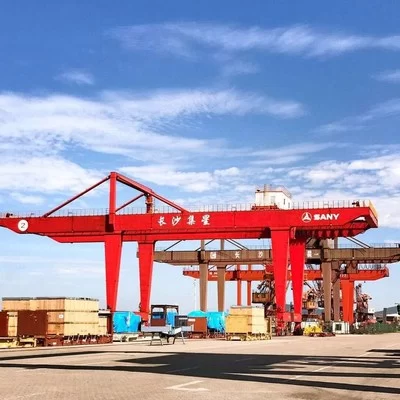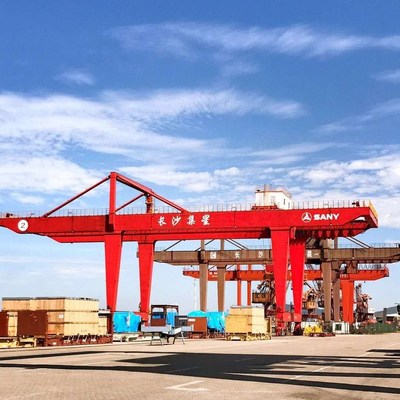BEIJING, March 20, 2023 — Carrying his fellow villagers’ hopes and expectations, Long Xianwen of the Miao ethnic group, headed to Beijing from his remote village in central China’s…
CGTN: How does China set tone for future of “One Country, Two Systems”?
BEIJING, Oct. 22, 2022 — The report delivered by Xi Jinping on Sunday at the opening of the 20th National Congress of the Communist Party of China (CPC) in…
CGTN: Yellow River: A Chinese tale of ecological protection, high-quality development
BEIJING, Oct. 22, 2021 — Deemed China’s "Mother River" and "the cradle of Chinese civilization," the Yellow River basin has seen remarkable improvements in its ecological environment over the last…
CGTN: China calls for innovation to promote high-quality development in Shaanxi
BEIJING, Sept. 16, 2021 — Innovation is often regarded as a pressing task in China, and to facilitate the high-quality development in all-round areas, efforts must be made in this regard.   The message was well emphasized during Chinese President Xi Jinping’s two-day inspection tour of northwest China’s…
CGTN: China officially in a ‘Xiaokang society’ as CPC celebrates centenary
BEIJING, July 3, 2021 — At a grand ceremony to celebrate the 100th anniversary of the founding of the Communist Party of China (CPC) on Thursday, Beijing officially announced that it has completed its goal of building a moderately prosperous society in all respects.   That marks the…
China Matters reveals the effort of a Chinese village in preventing falling back into poverty
BEIJING, July 2, 2021 — 2020 was undoubtedly the year of Covid-19 but in the same year, it is also the year of China’s eradication of absolute poverty in rural areas. And key to this has been China’s formula to focus on a…
CGTN: True Colors Are shown in Crisis
BEIJING, May 15, 2021 — Crises are an unavoidable part of human history. And the response to a crisis can make a difference in a country’s development. CGTN:True colors are shown in crisis On May 12, 2008, a major earthquake jolted Wenchuan, a county of Sichuan Province in…
Optimization of Business Environment Stimulates the Recovery of the Economy in Changsha, China
CHANGSHA, China, May 29, 2020 /PRNewswire/ — Changsha, the capital city of Central China’s Hunan province, issued multiple policies on optimization of business environment to stimulate a strong economic and social recovery.
According to Changsha Business Environment Optimization Coordination Center, since the year of 2019, Liuyang city (under the jurisdiction of Changsha city) has released a number of supportive policies, such as "Twelve Measures on Optimizing Enterprise Services of Liuyang" and "Implementation Opinions on Advancing Economic Development on Night-time, Rural and Network Scale". "Regulations on Optimizing Business Environment of Changsha " is planned to be implemented on June 1st, 2020. Enterprises’ enthusiasm for innovation and entrepreneurship has been stimulated significantly, thanks to these favorable policies.
Hunan Yanjin Puzi Holding Co., Ltd. (Yanjin Puzi), with its headquarter in Liuyang, is a listed company specializing in research, development, production and sales of leisure snacks. It has enjoyed a reputation as "the first enterprise in self-producing leisure snacks in China". "From a small candied fruit workshop with less than 10 workers, to a large-scale listed enterprise in food industry today, the brand ‘Yanjin Puzi’ has been popularized from Changsha to the whole nation, even to the whole world. We cannot reach so far without the favorable business environment of Changsha," the Chairman of Yanjin Puzi, Zhang Xuewu said.
The financial report shows that Yanjin Puzi has reached 464 million revenues and 57.2 million net profit in the first quarter of 2020, increasing 35.43% and 100.8% respectively quarter-on-quarter. From January 2nd to May 15th, the stock price has risen by as much as 151%.
The "Double-Channel Reform" in Yuhua district, Changsha, has enabled the procedures including processing of license, taxation, social insurance, official seals and account-opening to be handled within 2 hours. Since the implementation of the policy of "zero-meeting" acceptance, "zero-threshold" audit and "zero-cost" certification, 3,275 new enterprises have been established, seeing a growth of 31.3% year-on-year. The total number of market entities in Yuhua district ranked first among China’s central provincial capitals, thus being rated as one of the top 100 national investment potential regions in 2019.
As one of the three critical parks in China (Changsha) Cross Border E-commerce Comprehensive Pilot Zone, Changsha Huanghua Comprehensive Bonded Zone has been proactively supporting cross border e-commerce and firmly increasing "1210" imported bonded e-commerce business values. Since March, 2020, a great increase has been witnessed in imported products like fresh aquatic products, daily chemicals, high-tech and mechanical and electrical products in Changsha, under the impetus of domestic demand.
Changsha Cross Endless E-commerce Co.,Ltd. has set up its nationwide largest bonded warehouse in Huanghua Comprehensive Bonded Zone; more than 50% products of China are shipped from here. From January 1st to May 21st, 2020, ordering numbers exceeded 870,000, and import and export volume reached nearly 300 million, which marked a 5.1 times of growth of annual total volume and a 2.4 times of growth of import and export volume in 2019.
Another cross border e-commerce named Changsha Fengmai Cross Border E-commerce Co., Ltd. is mainly engaged in Russia business. Products are shipped to Russia via Erenhot three times a week by air. By May 25th, over 3.3 million orders, with a total value of US$22 million have been sent to Russia. With the end of the epidemic, two more shifts will be added to this route once a week.
In order to effectively mitigate the impact of the epidemic and to support the development of freight routes, Huanghua Airport Customs has further simplified the speed-up process and shortened the clearance time. The "24-hour Green Channel" provides opportunities for "zero-waiting" and "zero-latency". This year, international freight routes from Changsha to North America, European, Africa and other regions will be open.
Image Attachments Links:
Link: http://asianetnews.net/view-attachment?attach-id=364390
Caption: The manufacturing shop of Hunan Yanjin Puzi Holding Co., Ltd.
Link: http://asianetnews.net/view-attachment?attach-id=364396
Caption: Xianing port area in Changsha new port








